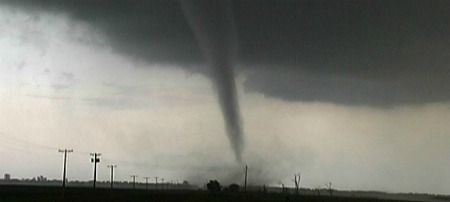A joint American-Israeli research project demonstrates for the first time how tiny particles of pollution dangerously affect the clouds.

A NASA-funded joint research project between the Hebrew University of Jerusalem and the University of Maryland has helped connect the dots further between air pollution and climate change.
The researchers believe air pollution is wreaking havoc on local weather systems and water distribution. This might explain freaky weather patterns and extreme tornadoes and flooding in the United States in recent years — or the fog blanket covering Beijing on its off-the-chart polluted days when it’s too dangerous to go outside.
As they described in a November article in the science journal Nature Geoscience, the bi-national team analyzed a 10-year dataset of atmospheric measurements taken by the US Southern Great Plains research facility in Oklahoma. This facility is run by the US Department of Energy’s Atmospheric Radiation Measurement program.
Looking at the data, the researchers have shown, for the first time ever, how aerosols — tiny airborne particles of sulfate, soot and dust from car exhaust, forest fires, and agricultural and industrial processes — impact cloud height, thickness and precipitation.
“When the air rises, the water vapor condenses on aerosol particles to form cloud drops. In cleaner air, the cloud drops are larger due to fewer drops and have better chances of colliding to form large raindrops,” explains Prof. Daniel Rosenfeld from the Hebrew University.
“In polluted air, more and smaller drops are formed. They float in the air and are slow to coalesce into raindrops. With a small amount of moisture, most cloud drops never become large enough for efficient precipitation, and hence rainfall is reduced.”

The rain that is withheld in moist, polluted, deep clouds freezes at higher altitudes to form ice crystals or even hail, he continues. “The energy released by freezing fuels the clouds to grow taller and create larger ice particles that produce more intense precipitation. This explains why air pollution can exacerbate both drought and flood,” he says.
Let it rain
The effects of pollution reduce rainfall in cool and dry areas, like Israel in the winter, and on the flipside cause worsening storms and floods in warmer, wetter regions such as Thailand or the eastern half of the United States.
The researchers believe that their findings have serious implications, giving policy-makers more knowledge about water use and management — not only for dry regions like the Middle East, but for anywhere around the world that may be at risk of drought, flooding and other extreme weather events.
While the development of new power plants in industrializing countries can help grow the GDP, the long-term effects of local climate could offset the perceived gains, the researchers say.
Both the National Science Foundation of the United States and the Chinese Ministry of Science and Technology provided funding for this research, which comes on the heels of another recent urban study that showed how summer storms worsen on weekdays in the eastern United States when there is more pollution emitted into the air.
Rosenfeld had done previous work on aerosols and climate change patterns. In this new collaborate study, the authors included professors Zhanqing Li, Feng Niu and Yanni Ding from the University of Maryland; Jiwen Fan of Pacific Northwest National Laboratory; and Yangang Liu of Brookhaven National Laboratory.















